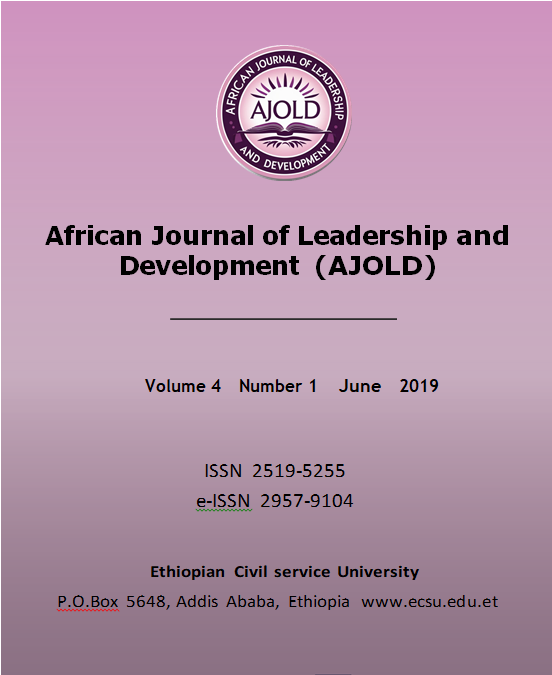Inter-organizational Coordination towards Youth Employment: The Case of the Addis Ababa City Administration
DOI:
https://doi.org/10.63990/2019ajoldvol4iss1pp32-48Keywords:
Inter-organizational coordination, Youth employment, Coordination mechanisms, Coordination instruments, Coordination effectivenessAbstract
Youth unemployment is among the challenges in urban centers of Ethiopia that requires coordination among various actors. This study assessed the practice in the public sector in using certain coordination mechanisms and instruments and their effectiveness in enhancing youth employment in the case of the Addis Ababa City Administration. In assessing the practice, three coordination mechanisms as well as 16 coordination instruments were considered. This study also analyzed the effect of the degree of practice in using the coordination mechanisms on the degree of effectiveness of those mechanisms. To meet the objectives, the descriptive and explanatory research designs were employed. Primary data were obtained from 230 properly-filled questionnaires drawn from 16 government entities (Bureaus, Sub-city-level offices and TVET colleges). The data were analyzed using descriptive statistics (including correlation analysis) and regression analysis. Some findings are drawn based on the results. First, the practice in using the coordination instruments under the hierarchy-type, market-type and the network-type mechanisms as well as the effectiveness of the coordination instruments generally ranged from medium to low/very low. Second, the effect of the degree of practice on the degree of effectiveness is found to be positive and significant. Nevertheless, further research that controls for other determinants of effectiveness is required. The overall conclusion is that urban youth employment coordination in the study area is not strong (i.e., there is coordinating problem). As a result, the effectiveness of the coordination instruments has also been limited. To address the coordination problem, certain courses of action are recommended.
Downloads
Published
How to Cite
Issue
Section
License
This work is licensed under a Creative Commons Attribution-NonCommercial 4.0 International License






